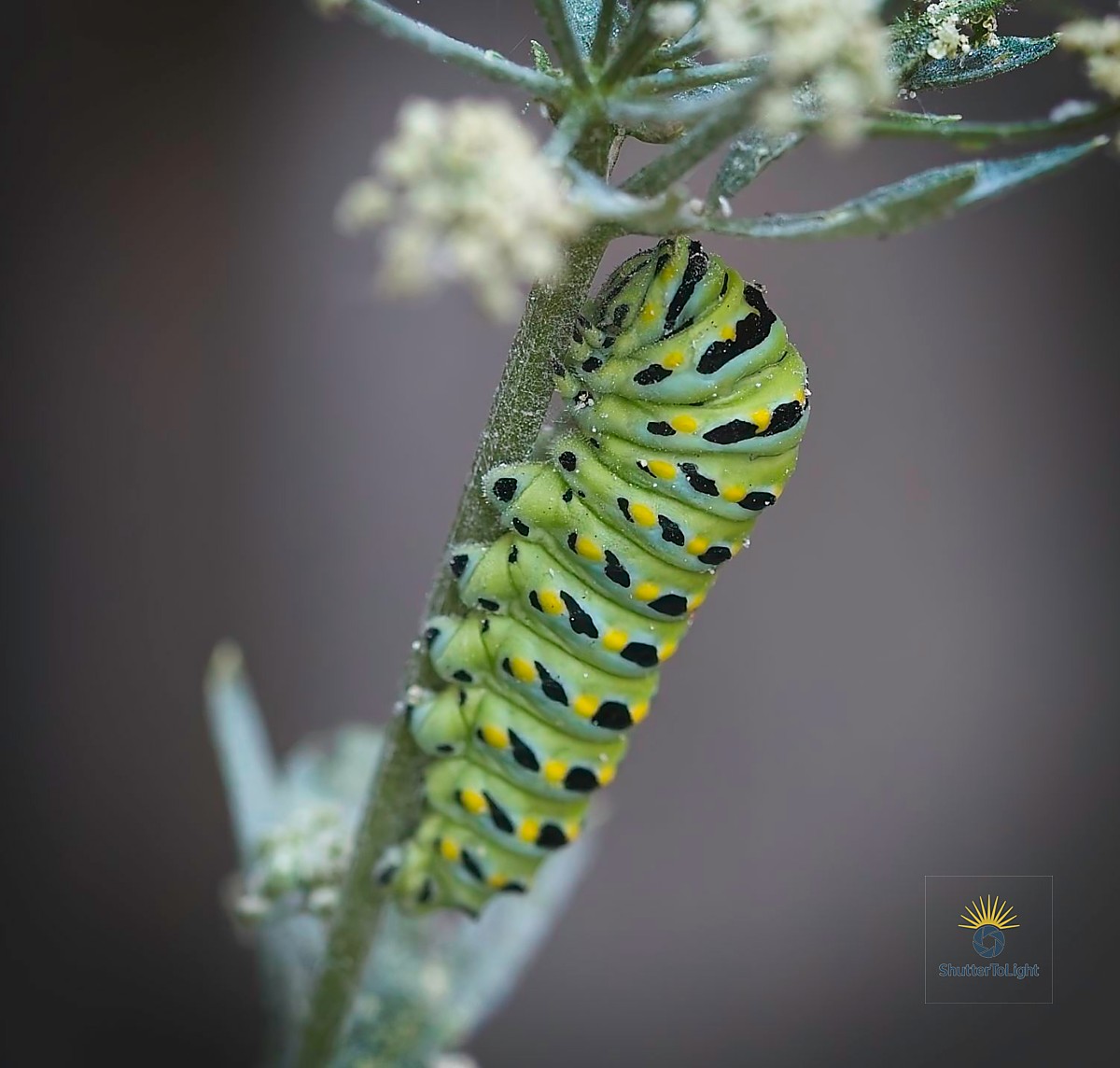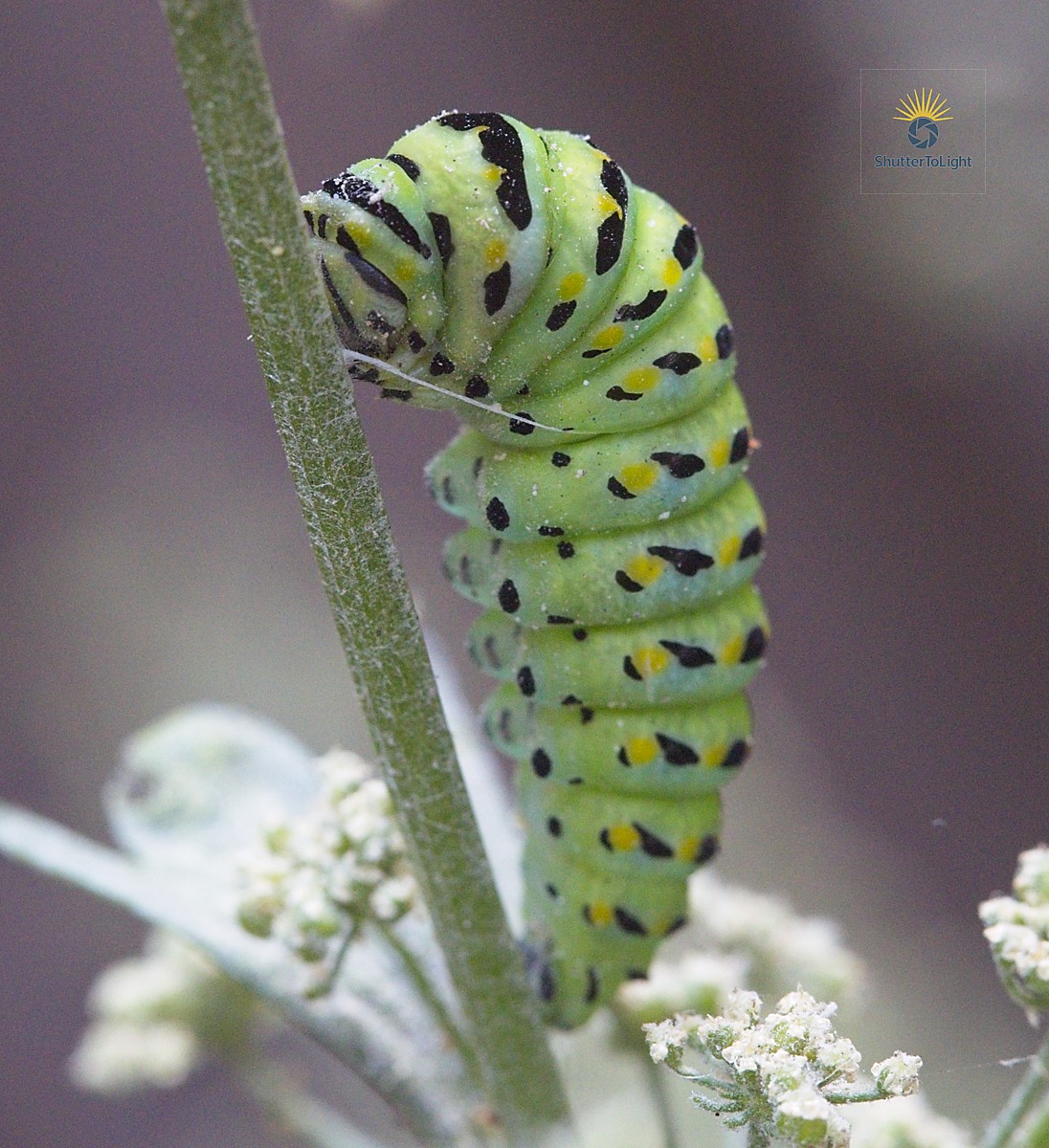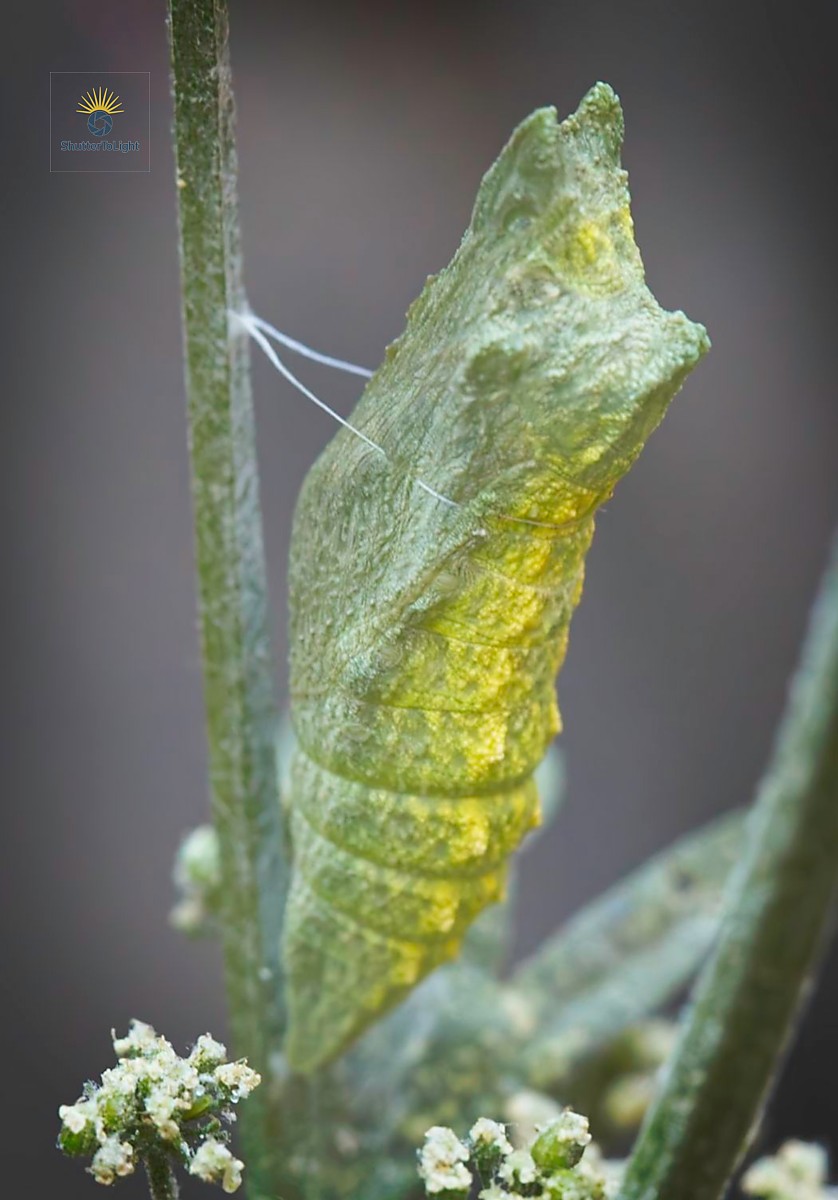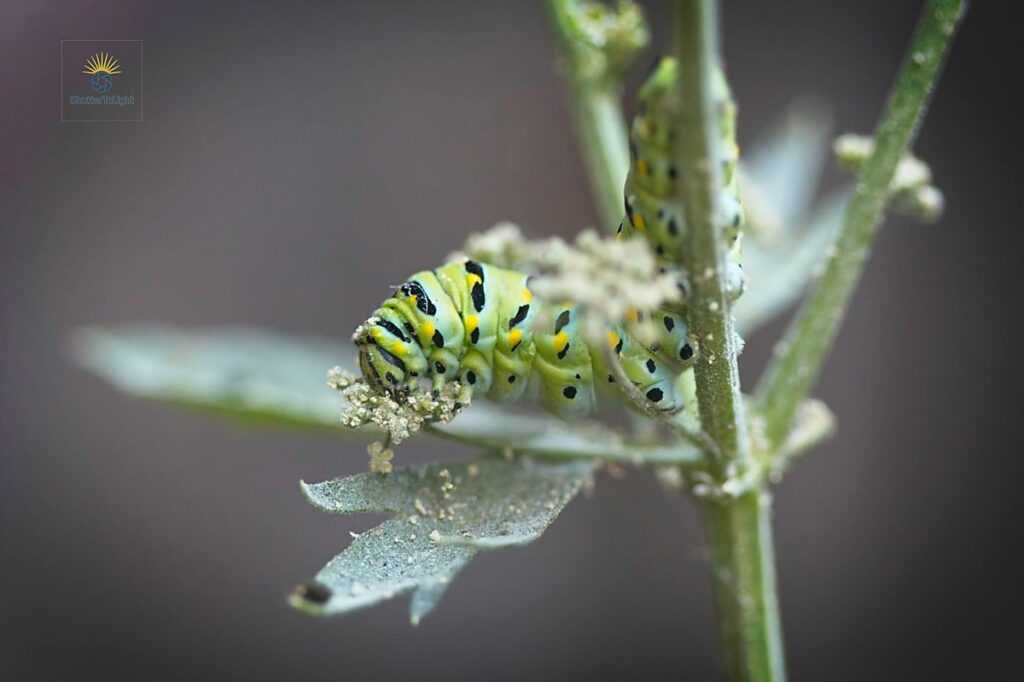坚守之道:一只小小毛毛虫的启示 / El arte de aferrarse: Lecciones de una pequeña oruga
First draft: July 12, 2025 · Published: July 14, 2025
(Backyard Garden Journal, Canon R5 Mark II + 100mm lens)
Sometimes the smallest creatures teach us the deepest truths about patience and change.
有时,最微小的生命能教会我们关于耐心与变化的深刻道理。
A veces las criaturas más pequeñas nos enseñan las verdades más profundas sobre la paciencia y el cambio.
Have you ever paused in your garden and wondered what lessons life’s tiniest residents might offer?
One quiet morning, I found myself captivated by a caterpillar—its patient persistence and silent transformation revealing wisdom I never expected. Sometimes, the greatest inspiration for resilience and growth comes from the most unassuming corners of nature.
A Daily Dance on Celery
Every morning lately, I’ve walked out into my little backyard celery patch with my camera, hoping to catch something new. I found it in the form of a tiny green caterpillar—a quiet teacher in resilience, balance, and the surprising art of simply holding on.

Caption: The caterpillar in its relaxed feeding posture, anchored by true legs and prolegs along the celery stalk. (7/10/25)
Sometimes I catch myself watching for minutes at a time, marveling at how something so small can be so focused on its purpose. It reminded me of how we, too, spend our days—clinging to our routines, our passions, our small comforts.
A Curious Change
Then one day, I returned after a short break to see something that made me pause. The caterpillar was drawn tight, legs tucked beneath its body. Only its head and tail ends gripped the celery stalk. I worried: Is it distressed? Did it sense me and freeze in fear? Is it about to fall?

Caption: The caterpillar adopts a compact posture, gripping only by head and tail—often a sign it is preparing to molt. (9AM 7/12/25)
But after reading more and observing longer, I discovered this wasn’t about alarm at all. This compact posture—gripping only by the head and tail—is actually a normal, instinctive behavior. Often it means the caterpillar is preparing to molt—to shed its old skin and grow into a new one.
Why Grip Only By Head and Tail?
- Molting preparation: By tucking in its legs and anchoring just at front and back, the caterpillar stabilizes itself for the delicate work of shedding its outer layer.
- Safety mechanism: If its mouth or front legs slip, the crochets (tiny hooklets) on its tail prolegs keep it securely attached.
- Energy saving: This position lets it rest or transform without using extra effort to grip with all its legs.
In fact, caterpillars have evolved remarkable strategies over millions of years. Some even spin a fine silk line—a kind of safety belt—in case they lose their grip entirely. It’s a simple, elegant design for survival.

Caption: After molting, the caterpillar may leave behind its old skin or, in time, form a chrysalis as it prepares for its next transformation. (6PM 7/12/25)
Holding On, Then Letting Go
This caterpillar is not only holding onto my celery stalk; it’s holding onto ancient instincts honed over countless generations. What seemed like vulnerability—dangling by just head and tail—was really quiet confidence in a timeless design.
“Perhaps that’s the true wonder: this tiny caterpillar, gripping my garden stalk, is also clinging to a million years of wisdom—patiently waiting for its moment to transform.”
Reflection / 反思 / Reflexión
Tomorrow, it might be in a new pose. Or maybe I’ll find only an empty skin, and somewhere nearby, a freshly minted butterfly. For now, I’m simply grateful for this humble lesson—that sometimes the best way to grow is to hold on tightly, trust what’s within you, and let nature take its course.
What Happens After: From Chrysalis to Butterfly
After forming its chrysalis, the caterpillar begins a remarkable transformation. In about 1–2 weeks, the chrysalis becomes transparent, and the butterfly’s wing colors appear through the casing. When the moment arrives, the butterfly will break free—emerging in just a few minutes. It will hang nearby, pumping fluid into its wings to expand and dry them. After several hours, it will take its first flight, leaving behind the empty chrysalis as a testament to its transformation.
| Stage | What You See | Duration |
|---|---|---|
| Chrysalis becomes transparent | Wing colors visible through casing | 0–24 hours before |
| Chrysalis splits open | Butterfly pushes out | 5–10 minutes |
| Wings expand and dry | Butterfly hangs, wings lengthen | 15–30 minutes |
| Wings harden | Butterfly remains still | 1–4 hours |
| First flight | Butterfly departs | — |
Tips for Capturing the Moment
- Watch for signs: Once the chrysalis turns clear, check frequently—emergence is near.
- Set up early: Place your camera on a tripod and pre-focus on the chrysalis to avoid last-minute movements.
- Use burst or video: The emergence is quick, so continuous shooting helps ensure you capture it.
- Soft natural light: Early morning or late afternoon is best for gentle, detailed shots.
- Be patient and respectful: Let nature unfold on its own time, with minimal disturbance.
What about you?
Have you observed a caterpillar’s transformation or captured a special moment in your garden? What lessons has nature taught you about patience, change, or resilience? Share your stories, photos, or thoughts in the comments below—let’s inspire each other to see the extraordinary in the everyday!
Related Post
If you enjoyed this story, you might also like my earlier post about a quiet encounter with a soon-to-be butterfly:
Visiting a Future Butterfly: A Gentle Moment Before the Flight
For more quiet moments from my backyard — plus tips on photography and seeing the small wonders — you can follow me on Instagram at @shutter2light or subscribe to my newsletter. Let’s keep discovering the art of holding on, together.

